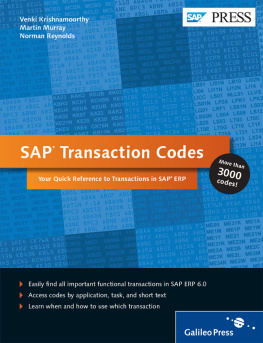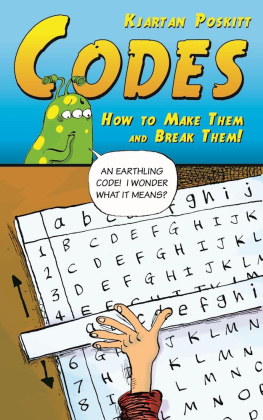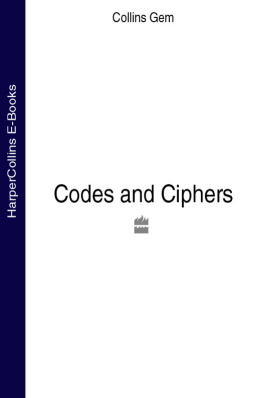Venki Krishnamoorthy - SAP Transaction Codes
Here you can read online Venki Krishnamoorthy - SAP Transaction Codes full text of the book (entire story) in english for free. Download pdf and epub, get meaning, cover and reviews about this ebook. City: Maryland, year: 2011, publisher: SAP Press;Galileo Press, genre: Computer. Description of the work, (preface) as well as reviews are available. Best literature library LitArk.com created for fans of good reading and offers a wide selection of genres:
Romance novel
Science fiction
Adventure
Detective
Science
History
Home and family
Prose
Art
Politics
Computer
Non-fiction
Religion
Business
Children
Humor
Choose a favorite category and find really read worthwhile books. Enjoy immersion in the world of imagination, feel the emotions of the characters or learn something new for yourself, make an fascinating discovery.
- Book:SAP Transaction Codes
- Author:
- Publisher:SAP Press;Galileo Press
- Genre:
- Year:2011
- City:Maryland
- Rating:3 / 5
- Favourites:Add to favourites
- Your mark:
- 60
- 1
- 2
- 3
- 4
- 5
SAP Transaction Codes: summary, description and annotation
We offer to read an annotation, description, summary or preface (depends on what the author of the book "SAP Transaction Codes" wrote himself). If you haven't found the necessary information about the book — write in the comments, we will try to find it.
SAP Transaction Codes — read online for free the complete book (whole text) full work
Below is the text of the book, divided by pages. System saving the place of the last page read, allows you to conveniently read the book "SAP Transaction Codes" online for free, without having to search again every time where you left off. Put a bookmark, and you can go to the page where you finished reading at any time.
Font size:
Interval:
Bookmark:
Your Quick Reference Guide to Transactions in SAP ERP

This e-book is a publication many contributed to, specifically:
Editor Florian Zimniak
Copyeditor Pamela Siska
Cover Design Janina Conrady
Production E-Book Graham Geary
Typesetting E-Book Publishers' Design and Production Services, Inc.
We hope that you liked this e-book. Please share your feedback with us and read the to find out how to contact us.
Library of Congress Cataloging-in-Publication Data
Krishnamoorthy, Venki.
SAP transaction codes : your quick reference to T-codes
in SAP ERP / Venki Krishnamoorthy, Martin Murray,
Norman Reynolds. 1st ed.
p. cm.
Includes index.
ISBN-13: 978-1-59229-374-2
ISBN-10: 1-59229-374-3
1. SAP ERP. 2. BusinessComputer programs.
I. Murray, Martin, 1964- II. Reynolds, Norman. III. Title.
HF5548.4.R2K76 2012
658.0553dc23
2011027425
ISBN 978-1-59229-374-2 (print)
ISBN 978-1-59229-745-0 (e-book)
ISBN 978-1-59229-746-7 (print and e-book)
2012 by Galileo Press Inc., Boston (MA)
1st edition 2012
The functionality of the SAP Business Suite is broken down into more than sixteen thousand individual transactions. Transaction codes (or t-codes) provide an easy way to access this functionality and to accomplish a specific task. By entering the code for a transaction in the command field of the SAP GUI, you can easily navigate to the exact transaction you need without taking the detour via the menu structure of SAP Easy Access. Thus, transaction codes save you valuable time.
This book aims to provide you with a reference for the most commonly used business transactions in SAP ERP. It lists the codes in alphabetical order, including their short text, and gives an explanation as to which functionality the individual transaction provides and what input it requires.
It would be a enormous task to list and explain every one of the sixteen thousand delivered transactions and it is doubtful whether such a book would be helpful or easy to navigate for the reader. Therefore, based on our experience in projects and that of our colleagues, we focus on the most commonly used functional transactions in the following modules of SAP ERP 6.0 Enhancement Pack 4:
Financial Accounting
Controlling
Inventory Management
Materials Management
Warehouse Management
Production Planning
Sales and Distribution
Plant Maintenance
Quality Management
Project System
Human Capital Management
Basis System
Many of these transactions can be accessed by following the menu path in SAP Easy Access or in the IMG (configuration transactions). It is a common practice to bookmark the commonly used transactions as favorites in SAP Easy Access.
This book is written for professionalsincluding business users, power users, administrators, and SAP consultantsinterested in learning about SAP transaction codes and how they can be used in implementing and using SAP solutions. Whether you need a refresher on a transaction in your module that you have not used in a while or you want to understand a transaction in a module that you usually do not work in, this book is for you.
We organized the transactions based on the modules where they are used. Transaction codes such as SQ01, which are commonly used across all modules, are covered in the Basis System chapter. Within each chapter, the transactions are sorted by their code, in the following order:
Symbols:
.,-,_,/Numbers: 0 9
Letters: A Z
You can search for a particular transaction code by simply browsing the specific module chapter, but the books extensive index provides you with several more search options:
You can search by transaction code. This is useful if you are not sure which module a specific code belongs to.
You can search by transaction short text. This helps if you know the exact short text but not the code of a specific transaction.
You can search by functionality. If you are looking for a transaction that provides a specific functionality but you know neither the transaction code nor the short text, try searching the index by activity keywords.
Many SAP users are still working with Releases 4.x and SAP ERP 5.0, and some of the transactions became obsolete in SAP ERP 6.0 EhP 4. For such transactions, we specify what the alternative transaction code is.
In SAP ERP, sometimes more than one transaction code is available to execute a particular functionality. In such circumstances, we mention all the various transaction codes.
Here is a quick look at what will be covered in each chapter:
explains transaction codes in the Financial Accounting module, including the following sub modules: Asset Management, General Ledger, Accounts Receivable, Accounts Payable, and Cash and Funds Management. This chapter does not include many treasury or financial supply chain management transactions. The transactions included in the book are intended to meet the organizations external/legal reporting requirements and control the consistent and structured process for recording financial transactions.
includes the most common transactions in the following sub modules in the Controlling module: Cost and Profit Center Accounting, Internal Order and Product Cost Planning, and Cost Object Controlling and Profitability Analysis. The transactions is this chapter are intended to meet an organizations business requirements for internal and management reporting. The Controlling sub modules and associated transactions facilitate controlling master data, resource planning, recording actual business transactions, and flexible reports and reporting tools.
explains the transactions associated with Inventory Management functionality. The chapter includes transactions for inventory movements, physical inventory, material documents, inventory analysis, and inventory reporting.
includes the most common transactions in the Materials Management module. The chapter includes descriptions for transactions in a number of areas such as material master data, vendor master data, purchasing functionality, invoicing, and creating message outputs.
explains the transactions associated with the Warehouse Management module. The chapter includes descriptions for transactions across the warehouse management component such as warehouse master data, transfer requirements, transfer orders, cycle counting, storage unit management, hazardous materials, and warehouse reporting.
includes the most common transactions in the Production Planning module. The chapter includes descriptions of production planning transactions such as master data, product costing, MRP, forecasting, production orders, process orders, capacity leveling, and Kanban.
explains the transactions in the Sales and Distribution module for major components such as master data for business partners and pricing, sales management (which includes quotes, contracts and sales orders), and shipping and billing. These transactions are intended to meet the business requirements for the sales and distribution of materials and services as part of the supply chain process. For example, the process may start with an organization taking a quote, contract or sales order with automatic checking of inventory levels and production/procurement lead times. Follow-on transactions may result in a delivery document being created to control the shipping process, such as transportation planning and goods issue, and this may also result in recognizing revenue and billing the customer.
Font size:
Interval:
Bookmark:
Similar books «SAP Transaction Codes»
Look at similar books to SAP Transaction Codes. We have selected literature similar in name and meaning in the hope of providing readers with more options to find new, interesting, not yet read works.
Discussion, reviews of the book SAP Transaction Codes and just readers' own opinions. Leave your comments, write what you think about the work, its meaning or the main characters. Specify what exactly you liked and what you didn't like, and why you think so.









